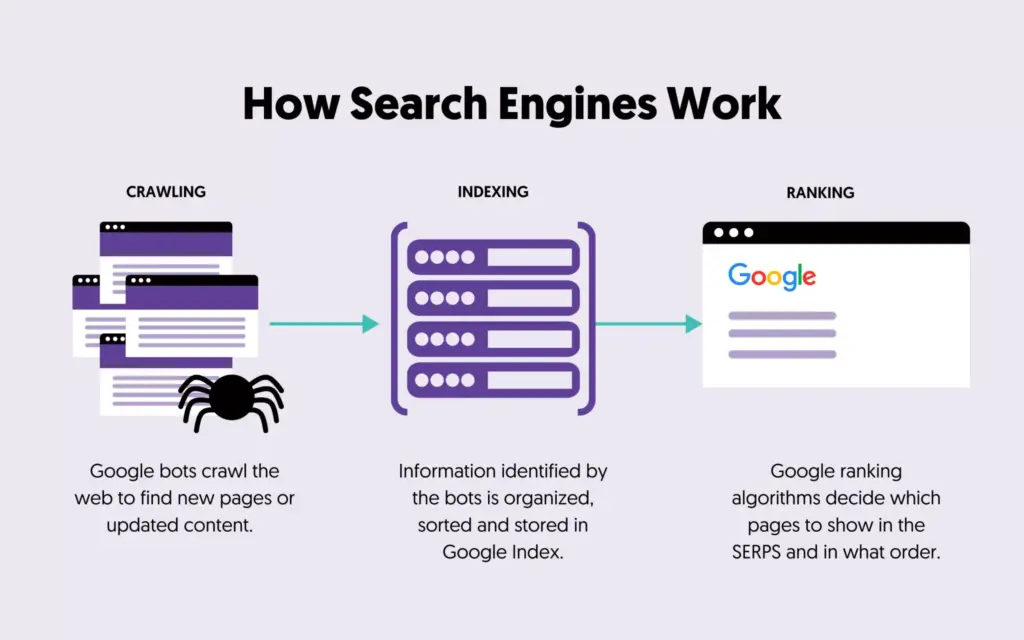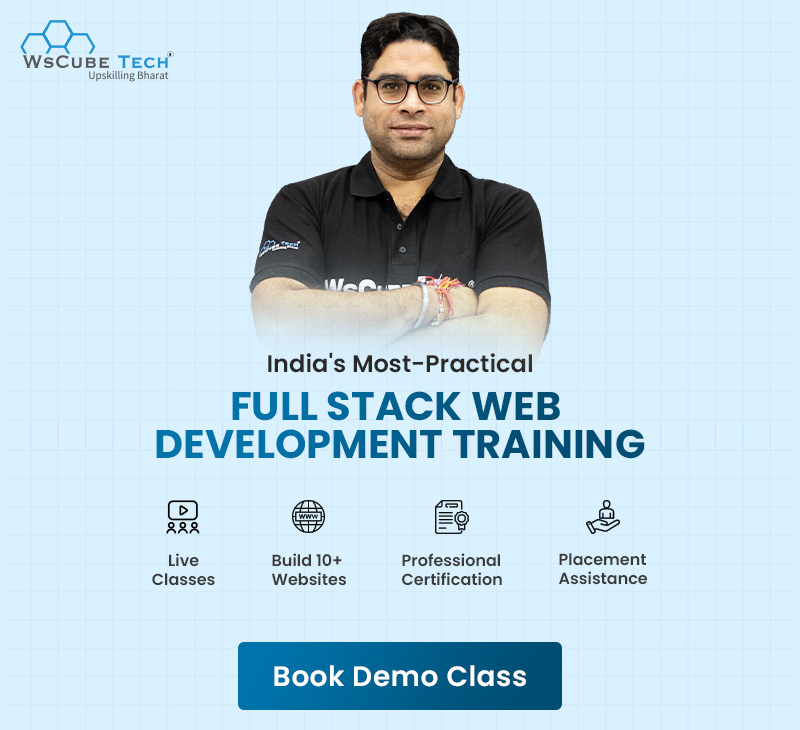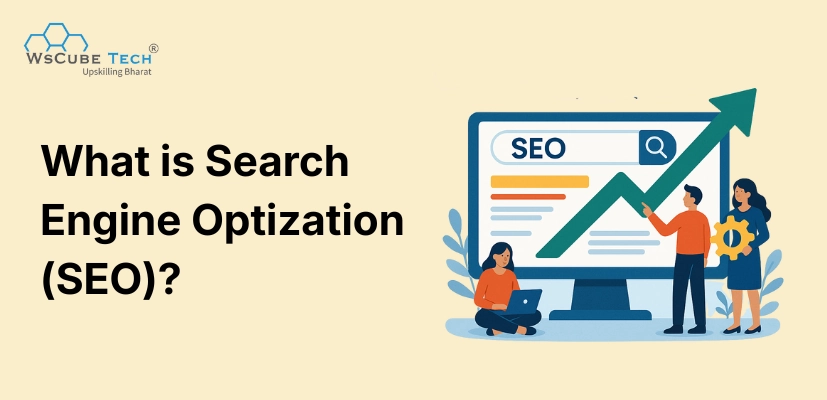When you search “summer dresses online” and see Myntra right on top, or look for “used cars in India” and find CarDekho among the first results— that’s no accident. It’s the smart use of Search Engine Optimization (SEO).
These brands don’t just depend on paid ads; they attract millions of visitors every month through organic search. SEO helps them appear exactly when users are searching for products or services they offer.
If you’ve ever wondered what is search engine optimization or wanted to understand what is SEO and how does it work, this complete beginner’s guide covers everything in simple, practical way.
What is Search Engine Optimization (SEO)?
SEO means improving your website so it ranks higher on Google and other search engines when people look for information, products, or services. Simply put, SEO helps your business get found online without paying for ads.

For instance, when you search for “cheap flights to Goa” or “best hotels in Manali,” MakeMyTrip (MMT) appears among the top results. That’s because MMT uses strong SEO strategies to attract millions of organic visitors every month; all from Google searches.
Today, SEO goes beyond just Google. With the rise of Generative Engine Optimization (GEO) and tools like ChatGPT, Perplexity, and Search Engine Everywhere, your content’s visibility depends on how well it’s optimized for AI-powered search results.
So, SEO remains the foundation for both traditional and AI-driven discovery, helping you appear wherever people are searching.
How Search Engines Work?
Search engines like Google don’t just magically show results. They follow a structured process to discover, understand, and display web pages. The three key steps are Crawling, Indexing, and Ranking.

1. Crawling
Crawling is the first step in how search engines explore the web. Google uses automated software called crawlers or spiders to visit websites and find new or updated content. These bots move from one page to another through links, scanning text, images, and code.
The goal is to understand what each page is about and identify which pages should be saved for later. If your site isn’t crawlable (for example, due to broken links or blocked pages), it won’t appear in search results at all.
2. Indexing
Once pages are crawled, the next step is indexing, where Google processes and stores the data it collected. The search engine analyzes each page’s content, including text, keywords, headings, meta tags, and structure to understand the topic and context.
It then adds this information to its massive Google Index, a digital library containing billions of web pages. Think of it as Google’s own version of a searchable database that helps it recall the most relevant pages in seconds when someone performs a search.
3. Ranking
When a user types a query, Google doesn’t search the entire web. It looks through its index to find the best matches. This process is called ranking.
Using hundreds of ranking factors like content relevance, keyword usage, backlinks, user experience, site speed, and freshness, Google decides which pages deserve to appear at the top. The higher your ranking, the more visible your website becomes to potential visitors.
Let’s understand how search engines work using a simple example of a library:
- During Crawling, librarians roam around collecting new books (webpages) from authors (website owners).
- During Indexing, they read each book, note its subject, and organize it neatly on the right shelf.
- During Ranking, when someone asks for “the best travel guides,” the librarian instantly recommends the most accurate, useful, and popular books first.

Why SEO is Important for Every Website?
Whether you run a small local business, an online store, or a personal blog, SEO is what determines how easily people can find you online. It’s about visibility, trust, and long-term growth.
These are the top reasons why SEO matters for every website:
1. Brings Organic and Consistent Traffic
Unlike paid ads that stop bringing visitors once you stop spending, SEO attracts organic traffic round the clock. Once your website ranks high, people will keep discovering your products, blogs, or services naturally.
This means a steady stream of visitors and leads without paying per click.
2. Builds Trust and Brand Credibility
People naturally trust websites that appear on the first page of Google. Strong SEO helps your site look reliable, informative, and user-friendly.
Over time, this visibility builds brand authority and users start recognizing and preferring your name when searching for similar products or information.
3. Boosts Sales and Business Growth
For businesses, SEO directly contributes to higher conversions and revenue. When your website ranks for buyer-intent keywords like “best travel agency near me” or “buy running shoes online,” you reach people ready to make a purchase.
That means more sales without extra advertising cost.
4. Helps Local Businesses Reach Nearby Customers
Local SEO ensures your business appears when someone searches for services “near me.” Whether it’s a café, salon, or dental clinic, optimizing your Google Business Profile and location-based keywords helps people find and visit you, which helps in driving footfall and real-world revenue.
5. Increases Website Monetization for Bloggers
For bloggers and content creators, SEO is the backbone of online income. More organic traffic means higher ad impressions, affiliate link clicks, and brand collaborations. With proper SEO, even a simple blog can turn into a profitable source of passive income over time.
6. Gives a Competitive Advantage
If your competitors are doing SEO and you’re not, you’re handing them free customers. A well-optimized site keeps you ahead of rivals by appearing first when people search for your niche. Even small improvements in rankings can make a big difference in clicks, leads, and growth.
7. Works Hand-in-Hand With AI and New Search Platforms
As AI-driven platforms like ChatGPT, Perplexity, and Google’s Search Generative Experience (SGE) rise, SEO is evolving too.
Websites that follow good SEO practices are more likely to be mentioned or sourced by these AI tools, ensuring visibility not just on Google, but across new search ecosystems.
Types of SEO
These are the main types of search engine optimization every beginner should know:
1. On-Page SEO
This is all about optimizing the content and elements that are directly on your website. It includes adding relevant keywords, writing clear titles and meta descriptions, using proper headings, and optimizing images.
2. Off-Page SEO
Off-page SEO focuses on actions you take outside your website to build its reputation and authority. The most common method is link building, where you get other trusted sites to link back to yours.
3. Technical SEO
This ensures that your website is technically sound so search engines can crawl and index it easily. It covers factors like website speed, mobile-friendliness, HTTPS security, and structured data.
4. Local SEO
If you run a business that serves a specific area, Local SEO helps you appear when people nearby search for your services. It includes optimizing your Google Business Profile and using location-based keywords.
SEO vs SEM
Understand the difference between SEO vs SEM:
| SEO (Search Engine Optimization) | SEM (Search Engine Marketing = SEO + PPC) | |
| Meaning | The process of improving your website to get organic traffic from search engines. | A broader strategy that includes both SEO (organic) and PPC (paid ads) to gain visibility. |
| Goal | To rank higher in search results organically and build long-term traffic. | To increase visibility quickly through both paid ads and organic results. |
| Cost | No direct cost per click — only time and effort needed. | PPC campaigns require payment for every click; SEO remains free. |
| Results Timeline | Takes time (3–6 months) but offers lasting results. | Paid ads give instant results; SEO adds long-term stability. |
| Visibility | Appears in the organic section of search results. | Appears in both paid (top) and organic (below) sections of results. |
| Sustainability | Long-term traffic even if you stop optimizing for a while. | Traffic stops as soon as ad spending stops. |
| Best For | Businesses or creators looking for steady, long-term growth. | New businesses or campaigns needing quick visibility and conversions. |
| Example | Ranking your blog for “best travel packages in India” organically. | Running a Google Ad for “book flights to Goa” while also optimizing pages for organic traffic. |
Must-Know SEO Topics for Your Career
How to Do SEO?
Understand the steps to perform search engine optimization for any website:
Define Goals, Audience, and Success Metrics
Decide what you want from SEO: leads, sales, sign-ups, or ad revenue. Describe your ideal visitor, the problems they face, and the actions you want them to take.
List 3–5 core KPIs (organic clicks, impressions, conversions, revenue). This clarity helps every later decision, including the topics you choose, pages you create, and how you measure progress.
Pick a Domain, Hosting, and CMS Built for SEO
Choose a memorable domain, fast hosting, and an SEO-friendly CMS (WordPress, Webflow, Shopify for ecom). Enable HTTPS from day one.
Install an SEO plugin (Rank Math/Yoast for WordPress). Set clean permalink structure (e.g., /category/topic/). From the start, keep your stack simple, fast, secure, and easy to maintain.
Plan Site Architecture Before You Write
Sketch a simple, logical structure:
Home → Categories (pillars) → Subtopics (clusters) → Articles/Products.
Map each target keyword to one page to avoid overlap. Keep navigation lean, add a footer with key links, and plan breadcrumbs. Good architecture helps users and crawlers discover and understand everything quickly.
Set Up Analytics Tools
Install Google Analytics 4 for behavior and conversions. Verify Google Search Console and Bing Webmaster Tools to monitor indexing, coverage, and queries.
Connect your sitemap (created by your CMS/plugin). Data from day one accelerates learning and fixes.
Do Keyword Research and Intent Mapping
Start with seed topics from your niche. Use keyword research tools to find long-tails with clear intent. Check the live SERP to understand what Google prefers (guides, lists, product pages).
Group keywords into clusters and map one primary keyword + a few supportive variations to each page.
Create Helpful Content Templates (Before Writing)
Build reusable outlines for pages: compelling title (with primary keyword), clear H1, short intro addressing search intent, scannable H2/H3s, FAQs, internal links, and a relevant CTA.
Add image spots with alt text. This template ensures every page is easy to read, satisfies intent, and is ready for on-page optimization.
Write Pillar Pages and Clusters First
Publish a strong pillar page for each main category, then supporting cluster articles that link back to the pillar (and to each other).
Aim for usefulness over length: answer questions directly, add examples, steps, visuals, and a quick summary. Include an FAQ section that targets People-Also-Ask style queries for extra coverage.
On-Page SEO for Every New Page
Optimize title tags (unique, benefit-driven, within pixel limit) and meta descriptions (compelling, persuasive, within pixel limit).
Use one H1, then H2/H3s with natural keyword variations. Keep URLs short and descriptive. Add internal links to and from related pages. Compress images, write descriptive alt text, and include a clear next-step CTA.
Technical SEO Foundations
Ensure mobile-friendliness (responsive layout), fast load times (caching, image compression, lazy-load, CDN), and clean code.
Create and submit XML sitemaps. Keep a sensible robots.txt (don’t block essential pages). Set canonicals to prevent duplicates. Fix 404s with proper 301s. Test Core Web Vitals and address LCP, CLS, and INP issues.
Add Structured Data (Schema) for Rich Results
Implement schema where relevant: Article/BlogPosting, Product, FAQ, HowTo, Organization, LocalBusiness.
Valid schema helps search engines understand your content and can unlock rich results (stars, FAQs, how-to steps), which typically improve CTR. Validate with Google’s Rich Results Test and fix warnings or errors promptly.
Local SEO Setup (If You Serve a Location)
Create/claim your Google Business Profile with correct NAP (Name, Address, Phone), categories, hours, and services. Add photos, collect reviews, and post updates. Build consistent citations on trusted directories.
Create location pages with unique content and local FAQs. This drives real-world visits, calls, and bookings.
Launch With a Promotion & Link-Building Plan
Announce key pages via your email list, social channels, and communities. Reach out to relevant sites for resource links, guest posts, and partnerships. Publish data, tools, or checklists that others want to reference.
Foundational links (press mentions, industry directories, author bios) help new sites get discovered and trusted faster.
Monitor, Learn, and Improve Weekly
Check Search Console for indexing issues, queries, and pages gaining impressions. Update titles/meta for better CTR. Strengthen internal links to pages that almost rank (positions 5–20).
Expand content where you’re close to winning. Refresh older posts with new sections, stats, and FAQs. Treat SEO as iterative, not set-and-forget.
Future-Proof With E-E-A-T and GEO (AI Visibility)
Show real experience: author bios, credentials, about page, contact details, privacy/returns (for ecom), and sources. Publish first-hand insights, images, and case studies.
For Generative Engine Optimization (GEO), structure content clearly, cite trustworthy sources, and keep facts updated so AI systems (e.g., ChatGPT, Perplexity) can confidently surface your brand.
On-Page SEO Checklist
- Use your primary keyword naturally in the title, headings, intro, and conclusion.
- Write a unique, catchy meta title tag (under 580 px).
- Add a compelling meta description (under 990 px).
- Use one H1 tag for the page title.
- Organize content with H2, H3, and other heading tags.
- Optimize images (compressed size + descriptive filenames + alt text).
- Keep URLs short, clean, and keyword-rich.
- Add internal links to related pages or articles.
- Add external links to credible, high-authority sources.
- Ensure mobile-friendliness (responsive design).
- Use bullet points and short paragraphs for better readability.
- Include clear CTAs (calls-to-action) to guide users.
- Optimize for featured snippets (use direct, concise answers).
- Add social sharing buttons to increase visibility.
- Check for broken links and fix them.
- Make sure content satisfies user intent.
- Regularly update old content to keep it fresh and accurate.
Off-Page SEO Checklist
- Build high-quality backlinks from relevant and authoritative websites.
- Write guest posts on trusted blogs within your niche.
- Get your website listed in reputable online directories and local listings.
- Create shareable content (infographics, guides, stats) that naturally earns backlinks.
- Participate in online communities like Quora, Reddit, or niche forums to build visibility and authority.
- Collaborate with influencers or industry experts for mentions and backlinks.
- Encourage brand mentions (even without links) on blogs and news sites.
- Submit press releases for major product launches or achievements.
- Use broken link building by finding and replacing broken links on other sites with your content.
- Get backlinks through resource pages and “best tools” or “top companies” lists.
- Engage in local SEO by optimizing your Google Business Profile and collecting customer reviews.
- Participate in podcasts or webinars to increase exposure and earn links.
- Share and repurpose content (videos, infographics, posts) on multiple platforms.
- Monitor backlinks regularly using tools like Ahrefs, SEMrush, or Google Search Console.
- Disavow spammy or low-quality backlinks that may hurt your site’s authority.
- Build relationships with journalists via HARO (Help A Reporter Out) for media mentions.
- Create testimonials or case studies for partner websites in exchange for a backlink.
- Track brand mentions using tools like Google Alerts or Mention.com.
Technical SEO Checklist
- Use HTTPS (SSL Certificate) for a secure and trusted website.
- Ensure mobile-friendliness. Your site should look and work perfectly on all devices.
- Improve page loading speed using caching, image compression, and a Content Delivery Network (CDN).
- Create and submit an XML sitemap to Google Search Console and Bing Webmaster Tools.
- Set up a robots.txt file to guide search engines on which pages to crawl or avoid.
- Fix crawl errors and check for blocked or broken URLs regularly.
- Use canonical tags to avoid duplicate content issues.
- Optimize Core Web Vitals — focus on loading speed (LCP), interactivity (INP), and layout stability (CLS).
- Enable structured data (schema markup) to help Google understand your pages better.
- Create a clean site structure with logical internal linking and easy navigation.
- Use a flat URL structure (avoid too many subfolders or long URLs).
- Add breadcrumbs navigation for better user and crawler experience.
- Set up redirects properly (301 redirects) for moved or deleted pages.
- Avoid duplicate meta titles and descriptions across pages.
- Enable lazy loading for images and videos to improve speed.
- Check for mobile usability issues in Google Search Console.
- Host your website on a fast and reliable server with minimal downtime.
Local SEO Checklist
- Create or claim your Google Business Profile (GMB) and fill in every detail.
- Use accurate NAP (Name, Address, Phone) consistently across all listings.
- Add business categories and services relevant to what you offer.
- Write a keyword-rich business description highlighting your specialties.
- Upload high-quality photos and videos of your business, products, or team.
- Encourage and respond to customer reviews regularly.
- Post weekly updates or offers on your Google Business Profile.
- Use local keywords like “best digital marketing course in Jaipur” naturally in your website content.
- Create location-specific landing pages for different branches or cities.
- Get listed in local directories (Justdial, IndiaMart, Yelp, etc.) with matching NAP.
- Build backlinks from local websites like chambers of commerce or local blogs.
- Embed Google Maps on your contact or location page.
- Add structured data (LocalBusiness schema) for better local ranking signals.
- Track performance via Google Business Insights and Search Console.
Key SEO Topics You Need to Know
| SEO Skills | SEO Career Path | SEO Benefits |
| SEO Salary in India | How to Become SEO Expert? | SEO Projects |
| SEO Interview Questions | How to Become SEO Freelancer? | How to Learn SEO? |
Best SEO Tools for Beginners
These are the best SEO tools to use:
1. Google Search Console: Tracks how your website performs on Google — shows clicks, impressions, ranking keywords, and indexing issues.
2. Google Analytics (GA4): Monitors your website traffic, user behavior, and conversions — helps you understand what’s working.
3. Google Keyword Planner : Free tool to find keyword ideas and estimate search volumes for your SEO or PPC campaigns.
4. Ubersuggest: Beginner-friendly tool for keyword research, site audits, and competitor analysis — created by Neil Patel.
5. Ahrefs Webmaster Tools: Free version of Ahrefs that helps check backlinks, keyword rankings, and site health.
6. SEMrush: All-in-one SEO tool for keyword tracking, backlink analysis, content ideas, and technical audits.
7. Yoast SEO (WordPress Plugin): Helps optimize your blog posts for keywords, meta tags, readability, and schema directly inside WordPress.
8. Rank Math (WordPress Plugin): Alternative to Yoast SEO that provides advanced on-page SEO analysis and easy schema setup for WordPress users.
9. Screaming Frog SEO Spider: Desktop tool that crawls your website to find broken links, missing tags, and technical issues.
10. Moz Pro / MozBar: Offers a Chrome extension and SEO tools to analyze domain authority, backlinks, and keyword difficulty easily.

How Long Does SEO Take to Work? (The Harsh Truth)
SEO takes time, and there are no shortcuts. On average, it takes 3 to 6 months to see noticeable results, sometimes longer if your niche is competitive.
But here’s the truth: the more consistent, high-quality effort you put in, the faster you’ll see results. SEO isn’t about doing a few tasks and then waiting for Google’s magic to kick in. It’s about sustained effort, strategy, and patience.
The market is full of so-called SEO experts who promise top rankings, take your money, and disappear. Don’t fall for that. Even if you’re hiring an agency or freelancer, learn the basics yourself, because in SEO, ignorance is what most businesses end up paying for.
Factors That Decide How Fast SEO Works
1. Competition in Your Industry
Highly competitive niches like travel, finance, or tech take longer because you’re competing against sites that have been doing SEO for years.
2. Quality and Frequency of Efforts
SEO rewards consistency. Publishing one article a month won’t help. Regular, high-quality work, including keyword research, content, backlinks, and optimization, drives results faster.
3. Website Age and Authority
New websites usually take longer to build trust with Google. Older, established domains see results quickly if maintained properly.
4. Content Quality and Relevance
You can’t fake expertise. SEO results depend heavily on how valuable, well-researched, and user-focused your content is.
5. Strategy and Execution
Random activities don’t count as SEO. You need a defined plan — keyword targeting, technical audits, content clusters, and link-building executed with purpose.
Future of SEO (Trends You Should Know)
SEO is evolving faster than ever. What used to work, like keyword stuffing, backlinks, or long generic blogs, doesn’t guarantee success anymore. Search engines are becoming smarter, focusing on user intent, content quality, and real expertise.
The rise of AI-powered search is reshaping how content gets discovered.
These are the key SEO trends you must understand to stay ahead:
Generative Engine Optimization (GEO) and AI Overviews
The biggest shift in SEO is the rise of AI-driven search experiences like Google’s AI Overviews, ChatGPT, and Perplexity AI. Instead of showing a list of links, these tools summarize answers directly on the results page.
To appear in AI summaries, your content needs to be factually accurate, structured, and trustworthy.
This new discipline, called Generative Engine Optimization (GEO), focuses on creating content that AI can easily interpret, cite, and use in its responses.
User Experience Will Outrank Everything
Google’s algorithm now rewards sites that load fast, work seamlessly on mobile, and are easy to navigate. Good Core Web Vitals (speed, stability, responsiveness) are becoming mandatory. A poor user experience can kill even the best content.
E-E-A-T and Content Authenticity
The future belongs to content written with Experience, Expertise, Authoritativeness, and Trustworthiness (E-E-A-T). Google and AI models prefer real human insights, case studies, and author-backed information over auto-generated text. In short, authenticity beats automation.
Voice and Conversational Search
More people are using voice assistants and conversational queries. Instead of typing “best yoga retreats India,” users now say, “Which yoga retreat in India is good for beginners?” Optimizing for natural language and question-based keywords will help your site appear in these results.
Visual and Video SEO Will Dominate
With platforms like YouTube, Instagram, and even Google Lens becoming major search engines themselves, visual and video SEO are must-haves. Add transcripts, captions, and optimized filenames so search engines understand your multimedia content.
AI-Generated Personalization
Search engines are shifting toward personalized experiences, showing different results to different users based on location, interests, and past behavior. Future SEO success depends on matching your content with user intent rather than chasing a single keyword ranking.
Real-Time and Continuous SEO Updates
Google is updating its algorithms more frequently and rolling out real-time indexing improvements. SEO is no longer a one-time project — it’s an ongoing process that requires consistent monitoring, refreshing, and adapting to algorithm changes.
Ethical SEO and Transparency Will Rule
Manipulative link schemes and fake content will fade out. Search engines and AI models are rewarding ethical, transparent, and user-focused content that genuinely adds value. The brands that build trust will dominate long-term.
Career in SEO
If you’re looking to build a long-term, future-proof digital career, SEO (Search Engine Optimization) is one of the smartest choices today. Every company, from startups to global brands, needs SEO experts to rank their websites, drive traffic, and generate leads.
As businesses compete for visibility on Google, skilled SEO professionals have become indispensable.
Unlike many careers that may fade with automation, SEO is evolving with AI, not disappearing. Whether you love writing, analytics, or strategy — SEO offers something for everyone.
Job Roles in SEO
- SEO Executive / SEO Analyst
- Content Strategist
- SEO Content Writer
- Technical SEO Specialist
- Link Building Specialist
- SEO Manager / Team Lead
- Digital Marketing Manager
- Freelance SEO Consultant
Skills You Need to Build a Career in SEO
- Understanding of Google Search algorithms and ranking factors.
- Expertise in keyword research and content optimization.
- Knowledge of technical SEO (site speed, indexing, schema).
- Experience with tools like Google Search Console, SEMrush, Ahrefs, and Ubersuggest.
- Strong writing, communication, and reporting skills.
- Curiosity to keep learning — SEO changes every few months.
SEO Salary and Earning Potential
Earnings in SEO depend on your skills and experience:
- Beginners (0–1 year): ₹15,000 – ₹30,000/month
- Mid-Level Professionals (2–4 years): ₹40,000 – ₹80,000/month
- Experienced SEO Managers (5+ years): ₹1 lakh – ₹2.5 lakh/month or more
- Freelancers and agency owners can earn even higher — sometimes ₹5–10 lakh/month — depending on clients and results.
Start Your SEO Career with WsCube Tech!
Learn SEO directly from industry experts who’ve lived and mastered it; not just read about it. Whether you’re a career seeker, freelancer, blogger, or business owner, our Online SEO Course helps you gain real, practical skills to rank websites and grow your digital success.
FAQs About Search Engine Optimization
SEO stands for Search Engine Optimization.
It refers to optimizing elements inside your website like titles, content, headings, and images so Google can understand your page better.
Off-Page SEO includes activities outside your website such as link building, guest posting, and social media engagement to build trust and authority.
Technical SEO ensures your site loads fast, is mobile-friendly, and can be easily crawled and indexed by search engines.
Local SEO helps your business appear in searches made near your location, like “best salon near me” or “doctor in Jaipur.”
Keywords are the words or phrases people type into search engines. SEO uses them to connect your content with what users are searching for.
Backlinks are links from other websites to yours. They act like votes of trust that can improve your rankings if they come from reputable sources.
Basic HTML knowledge helps, but it’s not mandatory. Most SEO tasks can be done using tools or CMS platforms like WordPress.
E-E-A-T stands for Experience, Expertise, Authoritativeness, and Trustworthiness — key factors Google uses to judge content quality.
GEO is optimizing your content so it can appear in AI-powered search results like Google’s AI Overviews, ChatGPT, or Perplexity summaries.
Black-hat SEO uses unethical tactics (buying backlinks, keyword stuffing, hidden text) to manipulate rankings. It can get your site penalized.
Both have roles. SEO builds long-term organic traffic; ads give quick results. The best strategy combines both for growth and visibility.
Interview Questions for You to Prepare for Jobs


